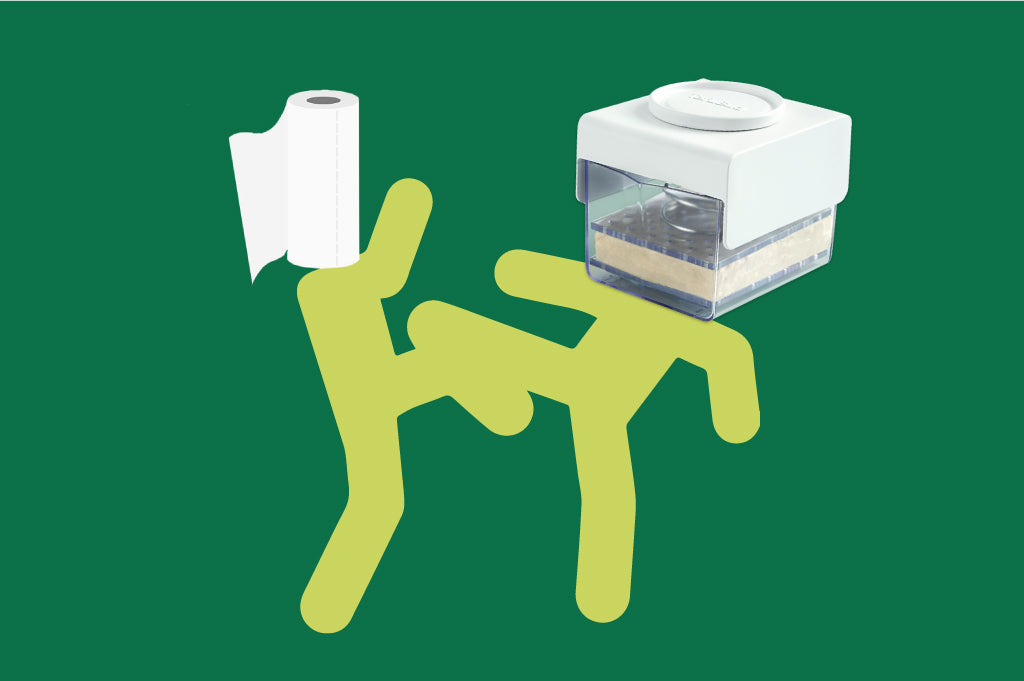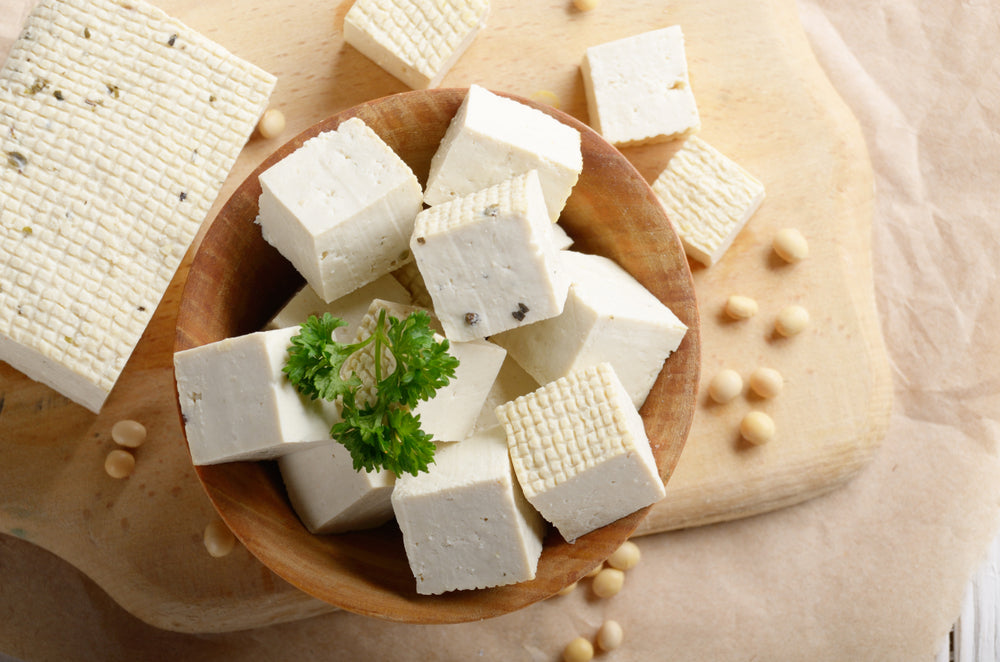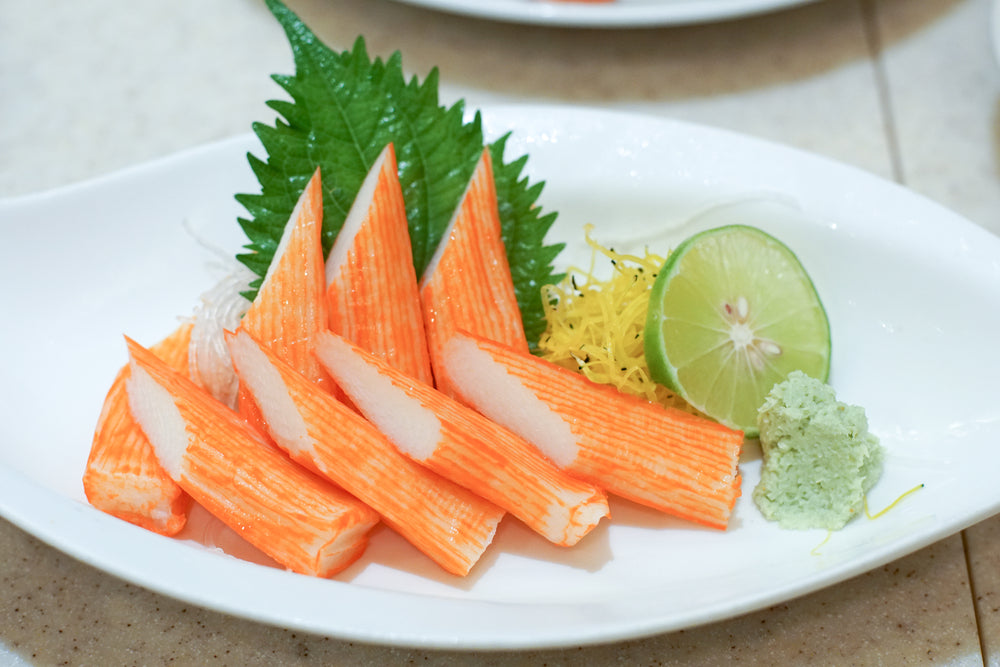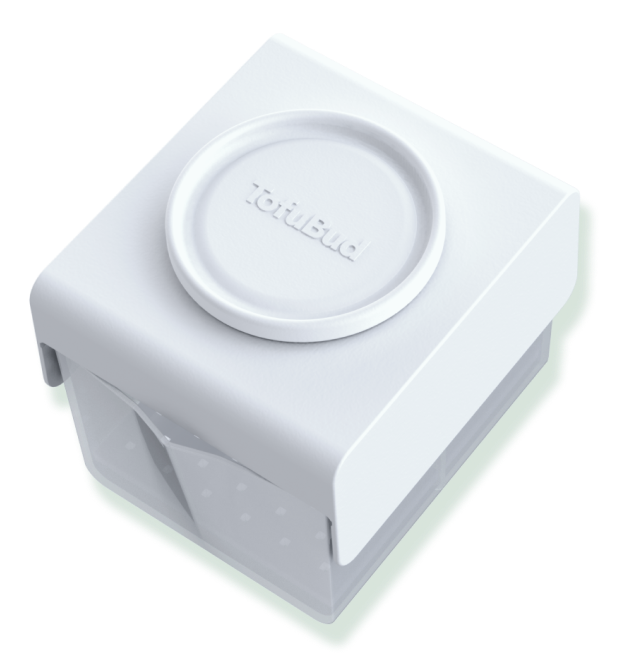Going vegan on a budget meal plan can be a tall order since any well-rounded vegan diet is stuffed full of fresh, whole fruits and vegetables. We all know these usually come with a hefty price tag. Use our vegan tips and tricks to build a vegan diet that's budget-friendly, too.
Vegetarian and vegan diets are a growing trend worldwide as people become more aware of modern farming's environmental impact and the potential health benefits of eating plant-based foods.
A healthy, vegan diet is full of fresh fruits, leafy green vegetables, whole grains, and lean plant proteins. While a typical vegan diet is high in vital nutrients that keep our bodies running like a well-oiled machine, fresh foods tend to have a higher price tag at the grocery store.
With a bit of careful planning, it’s entirely possible to build a vegan grocery list on a budget. By choosing a vegan diet, you've already knocked some of the most expensive grocery items off your list - meat and dairy products.
Eating vegan doesn't have to break your bank. Follow our tips below to learn how to shop vegan on a budget and make delicious, affordable vegetarian meals for you and your family!
Can being vegan be cheap?
A vegan diet on a budget is absolutely possible. Just like an omnivorous or any other type of diet, your grocery bill will be high if you opt for high-priced, pre-made, quality foods. It's also possible to shop sales, choose budget-friendly meals, and avoid take-out and drive-thrus.
Depending on how far you want to strip down this diet, it's possible to eat vegan on a budget that's even smaller than an omnivore's. One of the primary plant proteins in a vegan diet is beans, dirt-cheap and readily available.
By planning and making finance-friendly decisions, eat vegan food on a budget every day!
How to go vegan on a budget
#1: Learn your way around a kitchen
We love to go out to eat - the average American household spends roughly $3,000 on dining out each year. And the average cost per meal is $13, compared to $4/meal for food prepared at home.
We're not saying you have to forego the restaurant experience altogether, but even cutting down by dining out one less meal per week can make a big difference.
By cooking at home a little more often and eating out a little less, you will see significant cost savings that will allow you to spend more money on groceries and make vegan meal planning on a budget easier.
#2: Choose inexpensive ingredients
Like tempeh and seitan, some vegan proteins can become a little costly compared to cheaper alternatives, like tofu and dried or canned chickpeas, lentils, and beans.
Even being choosy with vegetables can save you quite a bit in the long run. Keep your food costs down by beefing up your meals with inexpensive grated carrots, broccoli, onions, or canned tomatoes instead of high-priced bagged salads, zucchini, or asparagus.
You'll need to do some cooking experimentation to find your favorite vegan recipes on a budget. A quick Google recipe search can help you find delicious vegan meals with inexpensive ingredients that you can add to a regular rotation.
Like me, you might get sick of eating beans pretty quickly on a vegan diet. That's why I love tofu - it's an inexpensive bean protein that doesn't taste or have the texture of other bean dishes. This recipe for tofu fried rice is hearty, affordable, and gives that stick-to-your-ribs feeling that can sometimes be missing in light vegan food.
#3: Buy dried goods in bulk
Generally, the larger the product you buy, the cheaper it is per unit to produce. Manufacturers pass these savings along to the consumer, resulting in you paying less per piece, too. That's the principle that drives Costco and other warehouse clubs' success, and one glance at their yearly profit shows $3.66 billion - clearly, their model is working.
While you don't need to have a warehouse club membership to buy in bulk, take full advantage if you have one. Otherwise, head to your local grocery store and compare the size to cost.
Oversized family packages at your local grocery store are well-worth the higher upfront cost, as they end up saving you a stack of cash in the long run. Buy big for any items that you can, especially dried goods with a long shelf life.
Don't buy big on fresh food unless you're sure you can get through it before it spoils because nothing is more expensive than throwing food away that you didn't eat. This is when meal planning becomes the game changer!
#4: Buy in-season produce and freeze
Most of us live in climates that vary substantially by the season, and fresh produce tends to be the cheapest when it's in season, which is coincidentally when fruits and vegetables taste the best, too.
One of the best ways to eat plant-based on a budget is to purchase your produce in season and build a diet around what's readily available in any season. For those that experience cold winters when nothing can grow, prepare by canning and freezing fruit and veggies in the summer and fall to avoid high grocery store prices for your favorites.
Head to local farmers' markets in your area to help support your local economy and pick up produce that is sometimes a small fraction of the cost of grocery store produce.
#5: Shop the store flyers
The difference in prices between high-end grocers like Whole Foods and discount shops like Walmart and Trader Joe's can be astounding. And honestly, I've found very little difference in the quality of fresh foods, no matter which store I choose to shop.
Head to a discount grocery store for immediate savings on almost every item, even those that aren't on sale.
No matter which grocery store you choose to shop at, you can take advantage of weekly sales by shopping the flyers and planning your meals around the cheapest ingredients of the week.
Handy flyer apps like Flipp show you all of the grocery flyers in your area so that you can choose to shop at whichever store will give you the best deals that week.
Buy any sale products in bulk, and freeze the extras until you're ready to use them.
#6: Show your green thumb
The cheapest fruits and vegetables are those that you grow yourself. If you have a spacious yard, dig a small plot and try your hand at growing a small vegetable garden. If you live in a small-sized apartment or condo, plant a few smaller veggies or fresh herb pots that you can leave on a balcony or sitting in a sunny window.
You get to control the process from start to finish and know exactly how your food was grown, without heavy pesticides common in commercial farming. Almost nothing tastes better than a freshly-picked piece of fruit or vegetable off of a plant you grew yourself.
#7: Soak your beans
Canned beans are a relatively inexpensive, fiber-dense protein that is an excellent addition to vegan meals on a budget. But cheaper yet, are dried beans that you soak yourself at nearly ¼ of the cost of their canned counterparts.
Most vegans eat a ton of beans, which means pretty significant cost savings over time using dried beans instead of canned. And honestly, we think dried beans taste a little better, too.
The cooking process for dried beans is super simple and very low-maintenance. Soak your beans in water in the fridge overnight. Then rinse and simmer on the stove for 45 minutes to 2 hours, depending on the type of bean.
#8: Make your own basics
Nut butter, mock-meat, vegan milk, and vegan cheese can be very pricey at the grocery store. While these aren't necessary staples for a vegan diet, they add some excitement and fun to your diet to not feel deprived.
You can make all of the above and more at home for a fraction of the cost of pre-made versions. All you need is a good, high powered blender or food processor, and you'll be making nut butter and almond milk in no time.
Vegan baking can be rich, decadent, and less expensive to help keep your vegan shopping list on a budget you can afford. Try making vegan tortillas, whole-grain bread, energy bites, cookies, granola, and more!
Final notes: Plant-based diet on a budget
Vegans really can eat well on a shoestring budget with some meal planning and wise food choices.
To keep your plant-based diet in line with your grocery budget, try to:
- Eat more home-cooked meals and less restaurant food;
- Choose recipes with inexpensive ingredients like tofu;
- Buy in bulk for significant cost savings;
- Buy produce in season when it's cheapest and freeze the extras;
- Shop your local flyers to find the best sale prices;
- Try your hand at growing a veggie garden or pots;
- Buy dried beans instead of canned;
- And make your own plant-based milk, cheese, nut butter, and more.
We hope these vegan grocery tips will help you eat well while keeping more of your hard-earned money in your pocket!








Leave a comment (all fields required)